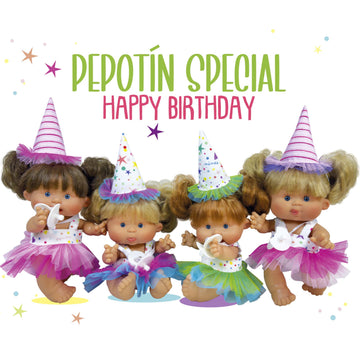Some Ideas on Dolls And Accessories You Should Know
Some Ideas on Dolls And Accessories You Should Know
Blog Article
The Basic Principles Of Dolls And Accessories
Table of ContentsNot known Details About Dolls And Accessories Getting My Dolls And Accessories To WorkNot known Details About Dolls And Accessories The Dolls And Accessories StatementsAn Unbiased View of Dolls And AccessoriesHow Dolls And Accessories can Save You Time, Stress, and Money.The Best Strategy To Use For Dolls And Accessories
When dolls are included in group play, youngsters practice waiting, sharing, and listening to others' concepts. Whether they're pretending to be a parent, sibling, or good friend, youngsters find out just how connections workhow to support others, fix arguments, and treatment for another person. These early role-play experiences become the groundwork for healthy friendships and relationships later in life.Repeating calming regimens with a doll (feeding, rocking, placing to bed) can aid kids feel tranquil and secure. Taking care of a doll can make a kid feel qualified and positive.
The Definitive Guide to Dolls And Accessories
When youngsters see dolls that mirror their race, heritage, and society, it reinforces a favorable sense of identity. Dolls also introduce kids to societies outside their own, building considerate inquisitiveness and compassion for others.
As Dr. Karyn Purvis, a leader in child development and trauma-informed treatment, once said: This powerful quote highlights how play isn't just funit's how children learn finest. The brain wires itself with rep. When a youngster is engaged, happy, and emotionally linked to an activitylike doll playthe mind reinforces those connections much faster and extra meaningfully.
The 5-Minute Rule for Dolls And Accessories

Boys need compassion, generosity, and creative imagination tooand doll play provides that. Dolls are often a child's initial "buddy," assisting them exercise connections, develop interaction abilities, and feel comforted.
8 Simple Techniques For Dolls And Accessories
Via play. Through satisfaction. With dolls that matter. Many thanks for joining us on this journey. Samantha Ong Samantha Ong is the creator of Joeydolls, a Canadian-based plaything brand on an objective to celebrate Asian societies through joyful, comprehensive play. Motivated by her own experiences maturing without social depiction, Samantha designs dolls that help children really feel happy with that they are while stimulating interest and empathy in others.
Having fun with dolls urges youngsters to talk more about others' thoughts and emotions, a study has discovered. The research study suggests that playing fictional games with dolls can help kids develop social abilities, concept of mind and compassion. The neuroscientist who led the work said that the educational value of playing with Lego and building toys was extensively approved, but the benefits of playing with dolls often showed up to have been ignored."When kids create fictional globes and role have fun with dolls, they connect initially out loud and after that internalise the message about others' thoughts, emotions and feelings," stated Dr Sarah Gerson, a neuroscientist at Cardiff University and the lead writer.
Dolls And Accessories for Dummies
They were likewise more probable to resolve the dolls in the 2nd individual, speaking to them straight, whereas the personalities on the computer system display they had a tendency to refer to in the 3rd individual. No distinction was observed in between young boys and ladies."Internal state language can suggest that a kid is assuming concerning various other individuals's ideas and emotions while playing with dolls," stated Gerson.
And that they see language use in this regard is great verification of the hypothesis."Mardell added that the findings ought to apply to any type of kind of role-play toy, instead than being details to Barbies."Children commonly start to show indicators of internal state language around the age of four.
Dolls And Accessories - The Facts
"It comes to be crucial for making and maintaining relationships, and exactly how they pick up from their teachers, and moms and dads."The study also discovered that the kids had actually increased brain activity in the posterior premium temporal sulcus (pSTS) region when they spoke as though their dolls had ideas and feelings. The pSTS region is believed to be involved in the development of social and emotional processing skills.
Youth is not a fixed life phase; indeed, the definition, meaning and understanding of childhood are all subject to alteration. By the 19th century among one of the most extensive changes was the value put on permitting kids to experience "the carefree pleasures" of youth with playtime activities. Play was currently considered to be an important component of a great youth.
In order to fully comprehend the significance of play, one should also comprehend the significance of the doll. Dolls are a lot more than toys developed to captivate young girls.
Dolls And Accessories Fundamentals Explained

It is just via archaeological examinations that scientists can hope to uncover and document the full variety helpful site of play experiences. Narrating these experiences, and particularly the duty of dolls, is essential for presenting a more complete photo of childhood years during the 19th century. Alarcn, Sara E - european dolls., "Child's Play: The Function of Dolls in 19th Century Childhood Years" (2007 )
Report this page